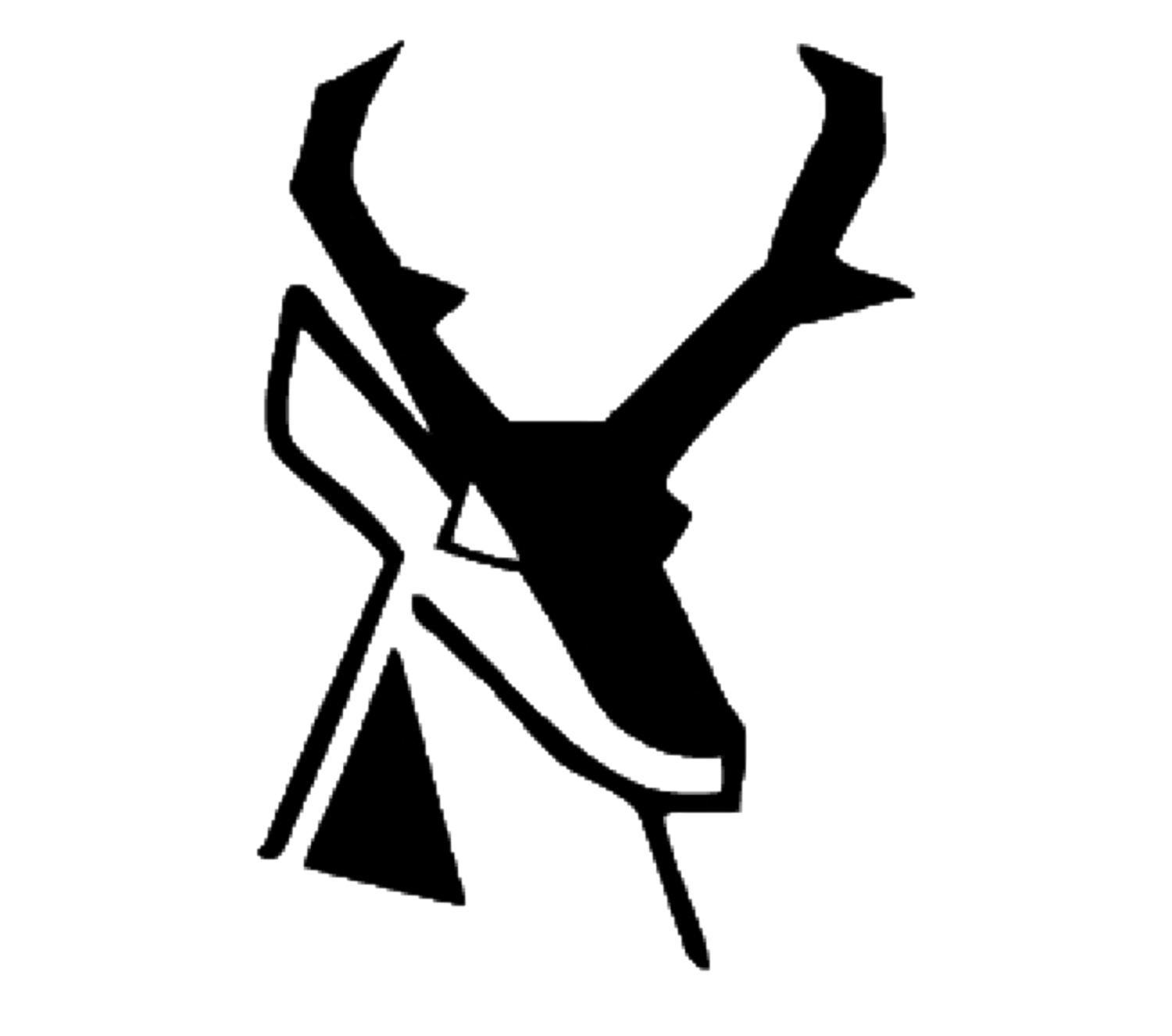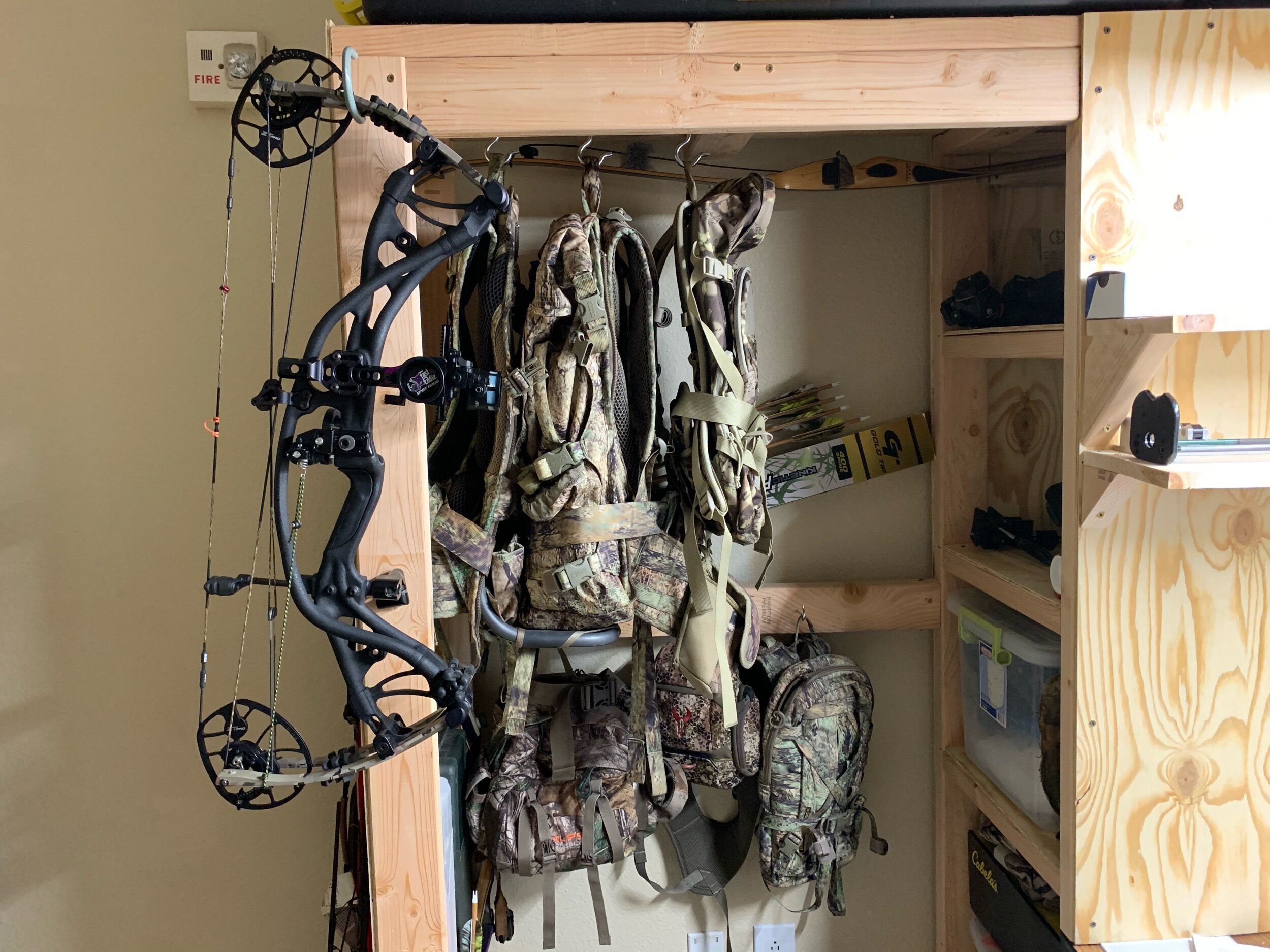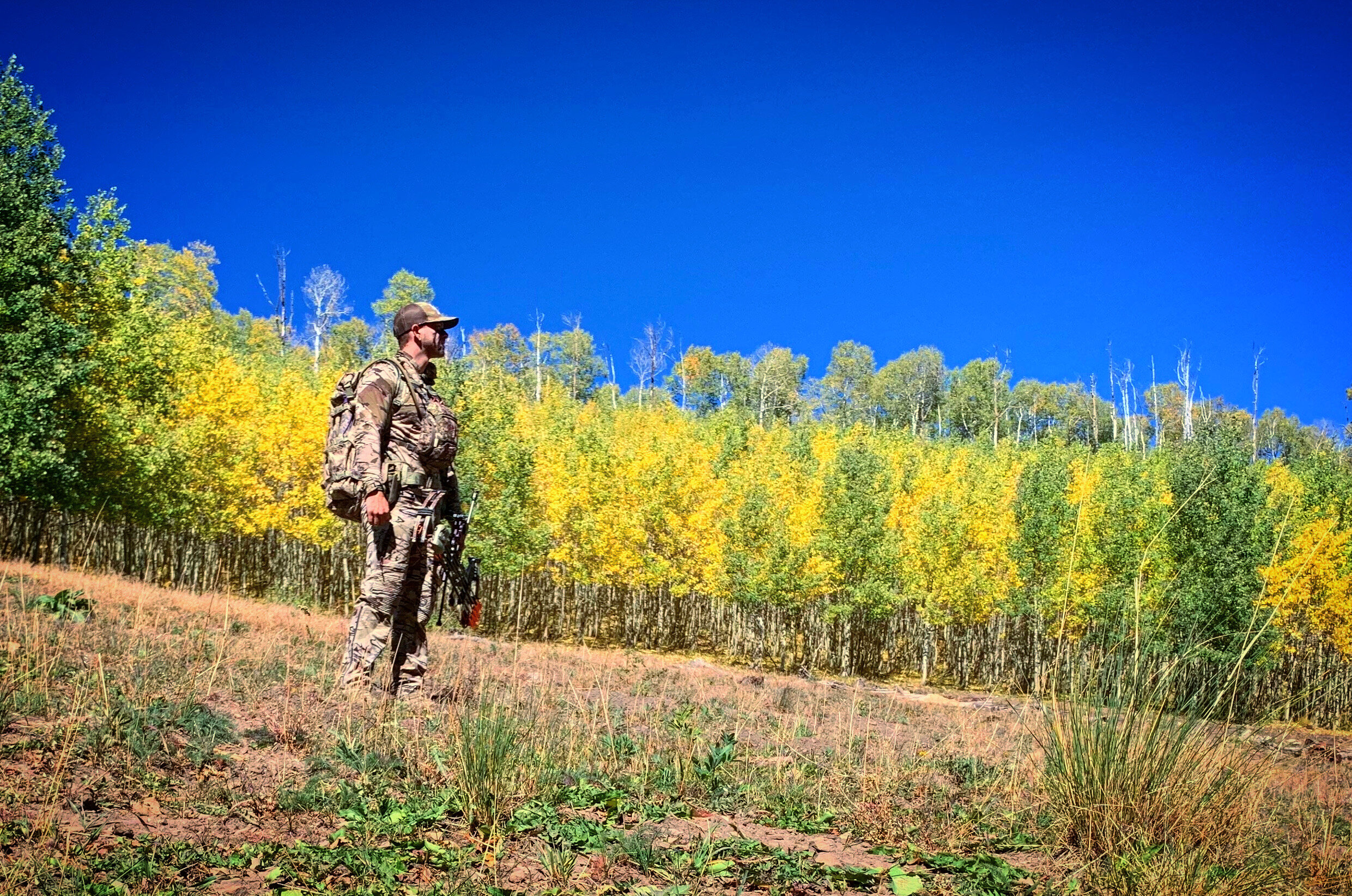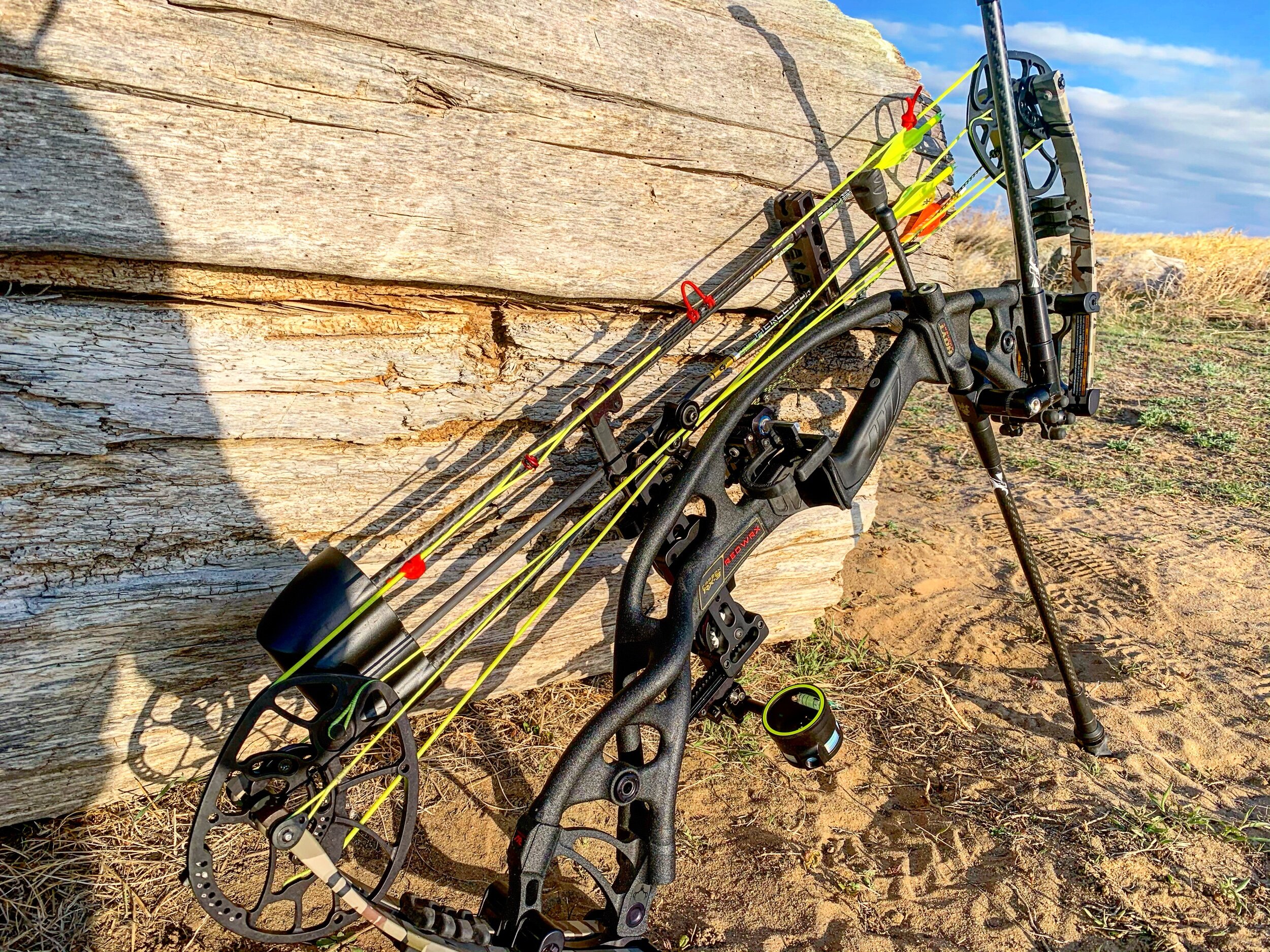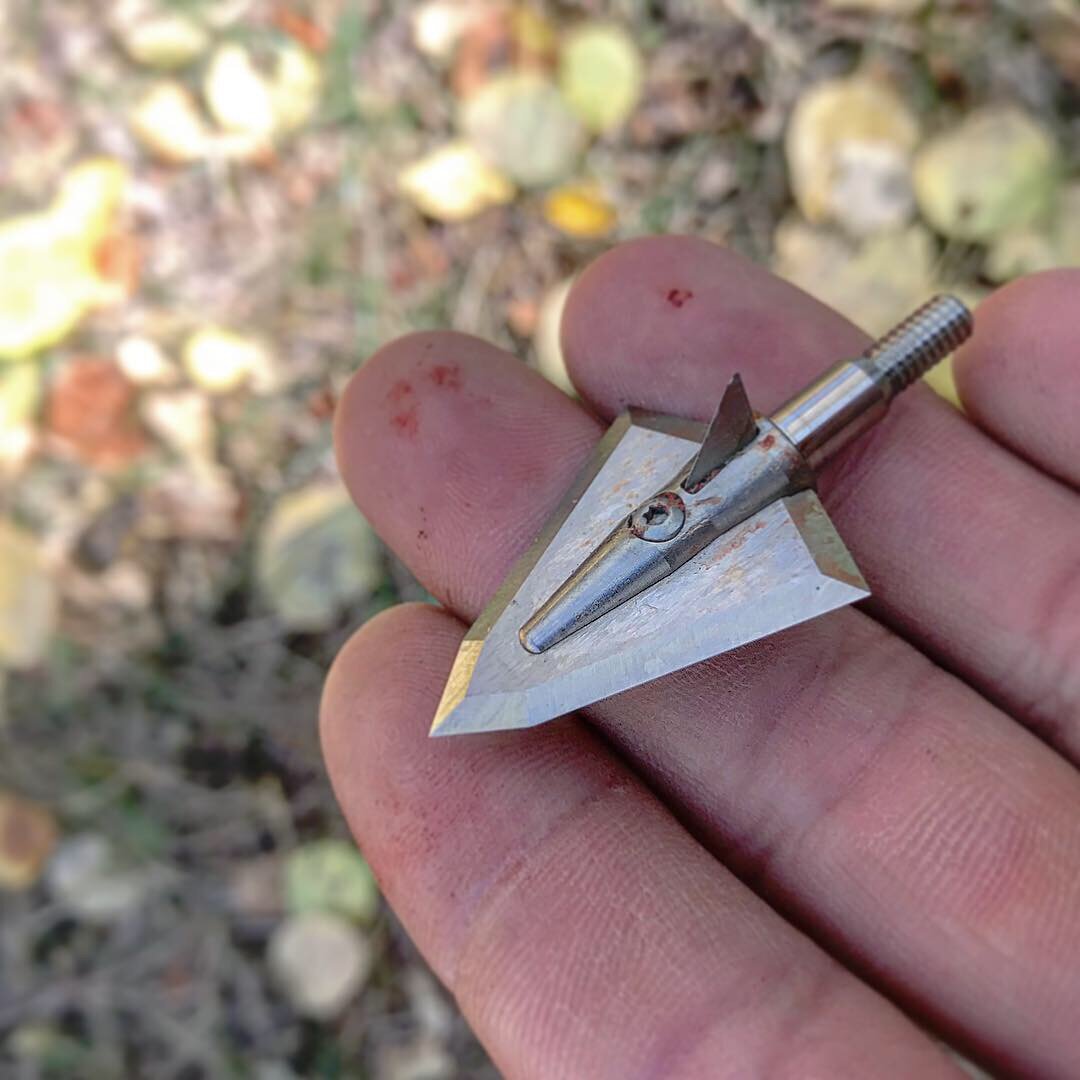The realm of hunting and archery gear is vast and often overwhelming. When choosing equipment, the factors of functionality, personal preference, and application all should be considered. Unfortunately, most hunting gear cannot be tested and returned if it fails to meet your standards, and purchasing and selling used gear will turn your wallet upside down in a hurry. In this article I will try to provide a look into my personal gear choices and the reasoning behind each choice, hopefully helping the reader in selecting gear that will work for them. There are so many subcategories of gear that this article may run a little long, but I would like to cover as much as possible without diving in too deep.
My lightweight, high mobility western kit
My high warmth, quiet fabric whitetail kit
A clothing system is often the most subjective gear category as the application largely dictates the pieces within the system. My application is mainly comprised of early to mid season western mountain hunting with some mid season whitetail hunting at the tail end. Camo pattern is the first choice that needs to be made, and actually is not as important and one might think, so choosing a pattern you feel confident in is about all that matters. I use Under Armour Barren and Forest pattern for all of my hunts. The number of close encounters that I’ve had where animals were unaware of my presence is enough to provide the confidence I desire. For my early season antelope hunts I predominantly wear the Raider pants and the Early Season Threadborne hooded top. The flexibility and breathability provide comfort and moisture wicking that makes hot weather hunts more enjoyable. For high country archery hunts in early September into mid September the Raider pants remain in my kit, however I layer with the Midseason Wool reversible top and bottom base layers. For my outer layer I utilize either the Under Armour 2 in 1 Primaloft convertible jacket or the Gore Tex Pro shell. For socks I like the Smart Wool hunter, and the Under Armour All Season Wool and they remain the same throughout all early season hunts. Footwear is often something that changes depending on the hunt I am going on, Pronghorn I use a goretex lightweight Under Armour tactical boot, high country I use either the Salomon ultra mid gtx, or the Salomon X ALP MTN GTX. The ultra mid is flexible and lightweight, yet provides adequate support while remaining waterproof. The X ALP MTN GTX is a much stiffer mountaineering style boot with better support and a more purpose built chassis for navigating more rugged terrain. On any western mountain hunt, I am always wearing gaiters. It’s hard to explain how amazing a good pair of gaiters are until you have a good pair. I choose the UA Ridge Reaper gaiters, they are waterproof, stay in place, and fit snugly thus not rubbing together causing excess noise.
Once midsession whitetail comes around, everything changes. My base layer remains the same, however I then switch to the Under Armour Timber Pants and Midseason Hooded mid layer. My 2 in 1 jacket is a good insulation layer to run under a UA Forest pattern pull over hoody. I then switch socks to the Smart Wool Ultra Heavy Wool over the calf, and Cabelas 1200g Thinsulate rubber boots. I utilize a Hot Hands Hand muff in exchange for my Under Armour Early Season gloves. I’ll also use a UA late season Primaloft beanie and neck gaiter. Changing out certain articles of clothing for others allows for a versatile system that can be layered for a wide variety of conditions.
A bow setup is not something that can be chosen off the preferences of someone else, however there are characteristics that can carry over across all brands and models. I shoot a Hoyt bow because they are typically easy to tune and the carbon risers are great for colder conditions because they retain more warmth to the touch. They are also one of the few manufacturers that offer 80 pound limbs and with a short draw, (27.5”) and the desire to shoot a heavier arrow, the added speed helps. In my opinion, a bow with yokes is my preference for tuning because they are often easier to micro tune than a bow with cam shims. The sight and rest I have chosen have been decided through years of testing and watching lesser components fail. For a rest, I choose the Hamskea Hybrid Hunter Pro. It uses a sealed ball bearing for movement, is easy to set up and tune, and provides the accuracy and durability I desire. For a sight, I have settled on the Spot Hogg Fast Eddie Double Pin. It is a heavy sight, but the durability is unmatched by anything else out there. Last season I took a tumble down a steep mountain, falling directly on top of my sight, and unlike my pride, the sight was not harmed. The double pin provides an extremely clean and uncrowded sight picture while allowing for a functional and useable pin configuration for most hunting applications. My stabilizer setup is of course, made by Cutter Stabilizers. Up front I run a 12” Altitude Pro and out back I run the 10” Utility Pro. The micro diameter carbon rod paired with full internal vibration dampening and machined aluminum components make for the best hunting bow stabilizer out there. I also utilize a Bee Stinger Elite offset bracket. My quiver of choice is a Tight Spot 5 arrow. The adjustability, light weight, and lack of added vibration make the hefty price tag worth while. Arrow selection is one of the most debated conversations out there, but for my personal choices, yes CHOICES, I have settled on what I have found to work best for my setup and what has proved the most accurate and durable. My main arrow of choice is a Gold Tip Pierce, the micro diameter flies well in the wind and penetrates well behind a quality broadhead, which we will get into later. My second arrow of choice is an Easton Axis Match Grade. The 5mm diameter allows for a more stout connection point for front end components, which is why it is my elk arrow of choice. For both arrow systems I utilize an Ironwill impact collar, they improve arrow durability and provide impact protection for both 3D and hunting applications. On the Gold Tip arrows, I substitute the factory front end components for a Firenock Aero Outsert. The precision machining and quality provide perfect concentricity and allow for much better arrow tuning and broadhead flight. I utilize two broadheads throughout my hunting season, for a mechanical head (antelope and whitetail) I choose the G5 Deadmeat, they fly great at long range, and do not take a ton of kinetic energy to deploy. For a fixed blade (Elk and Mule Deer) I choose the Ironwill S125. They are by far the sharpest, most durable, and best flying broadhead I have ever shot. Two seasons ago I had one CUT through an elk rib and shoulder blade from 42 yards. Often bones will shatter or crack, however this broadhead sliced through the bone, providing a short, easy to follow blood trail.
My Ironwill S125 after passing through and elk rib and shoulder blade, still able to shave hair.
Both arrows are fletched with Vanetec Super Spine vanes in a 4 fletch configuration. For mechanical heads and 3D applications I have found great flight with the 1.8” length, for fixed blades, the 2.3” are the winner for me. This year I have been testing the 3” vanes in a 3 fletch and have been pleased with the results. Release aids are one of my favorite pieces of gear to tinker and experiment with, however through my testing I have settled in on a few winners. For spring and summer training, I shoot a hinge in the Tru Ball Fulcrum Flex Quicksilver. It has a ton of adjustability, and fits my hand well. When hunting season comes around I switch over to a Scott Pursuit thumb trigger release. The trigger is heavy enough to achieve a good back tension release and it can also be attached to a wrist strap for hunting.
A sturdy tripod is a great way to exponentially improve your optic system.
Optics are a great piece of gear to spend some good money on. High quality glass will make you much more effective in glassing. Brands are pretty subjective, but a good rule of thumb is that you truly get what you pay for. I have chosen to run Vortex glass for most every optic in my system. My binoculars are the Razor HD 10x42s, the quality is great for the under $1200 price point and for me, they fit my needs. They live inside a Badlands Bino XD harness, which also carries my rangefinder and a small assortment of survival gear. The Ranger 1800 rangefinder has great range acquisition speed, and is accurate, while having good battery life and waterproof construction. My spotting scope is one of the few optics that I have from another manufacturer, that being Alpen, a company no longer in business. It cost me all of $110 through a pro deal and at that price point and with my frequency of use, it is perfect, all with glass quality that competes with optics up to the $500 price point. Unfortunately with them going out of business, their warranty no longer exists, so the shopping is back on for a new spotter. This past season I also purchased a pair of 15x56 Vulture HD binos and I am now a believer in 15 power binoculars being far more effective for long range glassing that a spotting scope. However at $500, the glass quality left something to be desired. The Khaibab 18x56 will be my go-to “big glass for this coming season. The optic quality and low light clarity are exceptional for the price point. For western hunting applications when glassing for hours at a time is often the best way to turn up game, a sturdy tripod is a vital piece of gear. Running a quality pair of 10 power binos off a tripod is sometimes better than a spotting scope. I run two different tripods for two different applications. For the backcountry, I choose the Vanguard VEO 2GO 204CB. It is a carbon tripod with an integrated ball head that weighs in at 1.5lbs and is built incredibly well. This tripod is also very easy and fast to set up, which is why I leave my iPhone mounted on it when still hunting, in the instance that a shot opportunity presents itself. For applications such as pronghorn or open country hunting where the wind is typically howling and I often find myself glassing while standing, I choose the Vanguard ESPOD CX203AP. With a weight around 2.25 pounds, it is still sturdy enough to be steady in strong winds along with being a taller tripod.
Camping/backpacking gear is obviously only needed if you plan on hunting from a remote camp away from your vehicle, which I do for the majority of my mule deer season. Regardless if you choose to take on the backcountry or not, a quality pack is a necessity for western hunting. I have chosen to go with the Eberlestock Little Big Top paired with the F1 Mainframe. The bag can be ran with or without the frame and carries weight up to 60 pounds comfortably. Once the frame is attached, loads over 100 pounds are very manageable. With an empty weight of nearly nine pounds, there is a little to be desired, but the load carrying capabilities make it worth every ounce. The Little Big Top is a bit large for simple day hunts, so for this season I decided to test out the Slumberjack Hone daypack. It offers a lot of organization pockets, a lightweight internal frame and can carry around 50 pounds without issue. Field use is still to be decided since summer scouting season has not yet arrived, but I am optimistic on that pack’s capabilities. For a sleep and shelter system I have two main kits, for overnight and quick trips I found a non-freestanding tent made by Andake and sold on Amazon. It weighs 1.2 lbs and is built well. Paired with a Tyvek ground cloth, the durability is adequate for mountain hunting applications. For multi day trips including hunts with potential foul weather, I choose a Kelty Grand Mesa 2 person. The additional space allows room to relax if I find myself confined to the tent due to poor weather. At 4.5 pounds however, it is a touch heavy. My sleeping bag is a Marmot Helium 15 degree bag. With a weight of 2 pounds 3 ounces, and a compressed size slightly larger than a big Nalgene bottle, it cannot be beat. The 15 degree temp rating is often overkill for early season and summer trips though, but using it as a “quilt” and leaving it unzipped is comfortable enough. My sleeping pad is a Thermarest Pro Lite Plus. At 1 pound 12 ounces, it is heavy, but the thickness and insulation provide a good night’s sleep. For water purification I use a Platypus Gravity Works system. It is just over a pound so the weight is heavier than other systems, but the ease of use and convenience of not needing to pump water is unrivaled. My stove is the Optimus Crux Weekend, it allows me to boil plenty of water for coffee and dehydrated meals while remaining efficient on fuel.
Set up with Kelty Aluminum trekking poles, this solo tent is perfect for quick trips into the backcountry.
All of the gear listed within this article is of course my personal preference that I have tested and decided on based on my results. Some of the items are new this year, but most have been chosen based on years of experience. On average, I hunt around 55 days per year and with that much time afield, I cannot risk a failure. The gear I have chosen over my hunting and archery journey may provide a starting point for your personal journey, but I would highly recommend doing your own testing where you can to determine what is best for you. Now is the time to dive into your gear and find what works and what does not. Hunting season is right around the corner and knowing your gear is dialed now will provide you with confidence come opening day.
